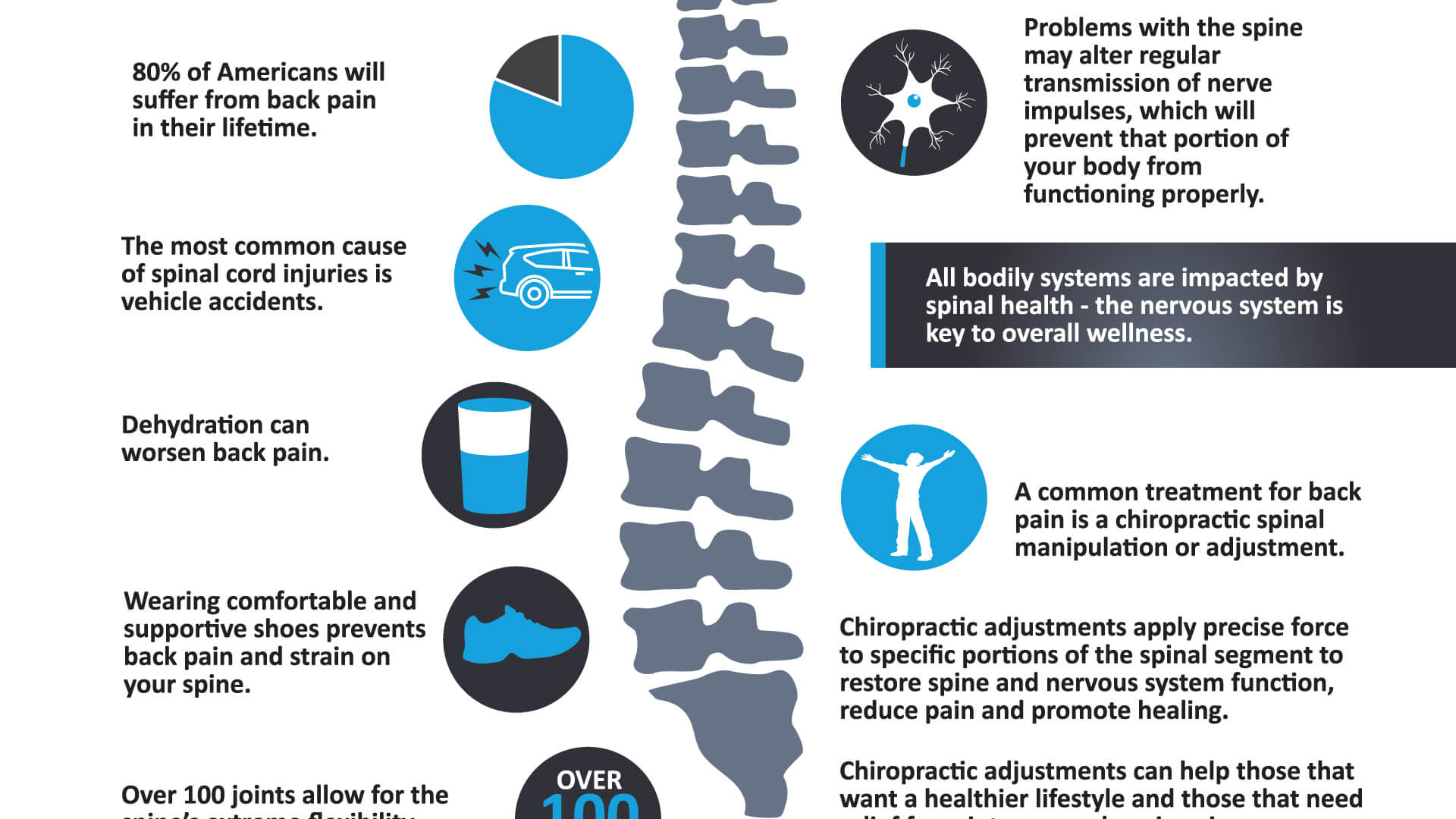The Connection Between Posture And Back Pain: Techniques For Preserving Correct Alignment Throughout The Day
The Connection Between Posture And Back Pain: Techniques For Preserving Correct Alignment Throughout The Day
Blog Article
Content By-Fletcher Fox
Maintaining correct pose isn't almost sitting up right; it has to do with straightening your body in a way that supports your back and decreases the danger of neck and back pain. The way you sit, stand, and relocate throughout the day can considerably influence your spinal wellness. However exactly how exactly can read this article ensure good placement regularly, even during active days filled with different tasks? Allow's dive deeper right into the subtle yet impactful modifications you can make to your daily routine to maintain your back happy and healthy and balanced.
Value of Correct Stance
Correct pose is critical in maintaining a healthy back and stopping discomfort. When you rest or stand with good posture, your back remains in positioning, decreasing pressure on your muscle mass, ligaments, and joints. This placement enables the body to distribute weight uniformly, avoiding too much anxiety on particular locations that can cause discomfort and pain. By maintaining your back correctly straightened, you can likewise boost your breathing and digestion, as slouching can press organs and restrict their performance.
Moreover, keeping great stance can boost your general appearance and self-esteem. When you stand tall with your shoulders back and head held high, you exhibit confidence and show up even more friendly. Excellent position can also make you feel extra invigorated and alert, as it advertises correct blood circulation and permits your muscular tissues to function efficiently.
Incorporating correct stance into your day-to-day regimen, whether sitting at a workdesk, strolling, or working out, is essential for protecting against pain in the back and promoting overall well-being. Keep in mind, a tiny adjustment in how you hold on your own can make a substantial difference in exactly how you feel and function throughout the day.
Common Postural Mistakes
When it comes to preserving good pose, lots of individuals unconsciously make typical blunders that can add to back pain and discomfort. One of one of the most prevalent errors is slouching or hunching over while sitting or standing. This placement places too much stress on the back and can cause muscle inequalities and discomfort over time.
One more common mistake is overarching the reduced back, which can squash the natural contour of the back and create discomfort. Furthermore, crossing legs while resting might feel comfortable, yet it can develop a discrepancy in the hips and pelvis, causing postural concerns.
Using a pillow that's also soft or also strong while sleeping can additionally affect your positioning and contribute to neck and back pain. Last but not least, continuously craning your neck to take a look at screens or readjusting your setting often can stress the neck and shoulders. Bearing in mind these usual postural mistakes can assist you keep better positioning and minimize the danger of back pain.
Tips for Correcting Positioning
To boost your alignment and reduce back pain, it's important to concentrate on making small adjustments throughout your day-to-day regimen. Begin by being mindful of your position. When resting, guarantee your feet are level on the floor, your back is straight, and your shoulders are loosened up. Avoid slouching or leaning to one side. Usage https://griffinuokdj.wizzardsblog.com/31178657/an-amateur-s-handbook-to-comprehending-chiropractic-care-adjustments or pillows to sustain your lower back.
When standing, disperse your weight uniformly on both feet, keep your knees a little curved, and embed your pelvis. Engage your core muscular tissues to support your spinal column. Take breaks to extend and walk around if you have a less active task. Include workouts that reinforce your core and back muscle mass, such as slabs or bridges.
While resting, make use of a pillow that sustains the natural curve of your neck to preserve proper spine placement. Avoid sleeping on your stomach, as it can stress your neck and back. By bearing in mind these suggestions and making small changes, you can gradually remedy your positioning and minimize back pain.
Final thought
Remember, keeping good posture is essential to preventing neck and back pain and advertising spinal health and wellness. By being mindful of your alignment, distributing weight evenly, and involving your core muscle mass, you can reduce strain on your back and reduce the threat of pain and injury. Incorporate ergonomic support, take normal breaks to extend, and enhance your core and back muscle mass to keep correct positioning throughout the day. Your back will thanks for it!
